#national museum of scotland
Text

Some years ago a lady brought to the Royal Scottish Museum in Edinburgh a trout covered with a fine coat of white fur. It was pleasingly mounted on a wooden shield and was labelled as follows:
FUR BEARING TROUT
Very Rare
Caught while trolling in Lake Superior off Gros Cap, Near Sault Ste. Marie, district of Algoma. It is believed that the great depth and the extreme penetrating coldness of the water in which these fish live has caused them to grow their dense coat of (usually) white fur. Mounted by ROSS C. JOBE, Taxidermist of Sault Ste. Marie, Ont.
Visiting the museum to find out more about her unique fish, the lady was told that it was undoubtedly a trout (either brown or brook) and that its fine white coat was undoubtedly from a rabbit, whereupon she immediately presented the fish to the museum. She had bought this fake in good faith which indicates that the idea of a fur-bearing trout did not seem outlandish to her.
―Stanley Peter Dance, Animal Fakes & Frauds, 1976
#fur bearing trout#fur-bearing trout#fearsome critters#animal fakes & frauds#s peter dance#taxidermy#hoax#royal scottish museum#national museum of scotland#ross c jobe#photographer unknown#popular post
2K notes
·
View notes
Text
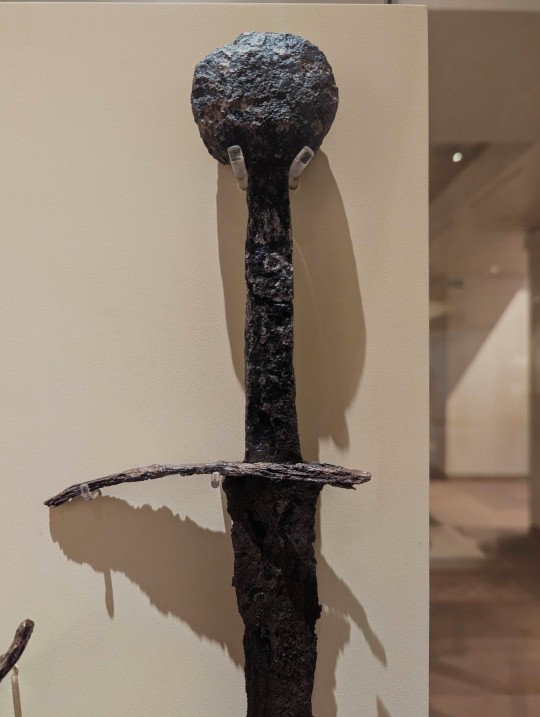

Sword Hilt and Portion of Blade Excavated from the Isle of Man dated between the 13th-14th Centuries on display at the National Museum of Scotland in Edinburgh Scotland
Photographs taken by myself 2023
#sword#medieval#military history#archaeology#art#scotland#scottish#national museum of scotland#edinburgh#barbucomedie
199 notes
·
View notes
Text

Black & white glass plate negative of Lachlan MacAskill with a peat spade and his pet dog and kitten, above Laig Bay, Isle of Eigg with An Sgurr in the distance.
Photographed between 1910 and 1930, part of the MEM Donaldson Collection at the National Museum of Scotland.
- Source: Stories of Scotland Podcast
#Lachlan MacAskill#peat#Laig Bay#Isle of Eigg#An Sgurr#Scotland#storycatching#vintage photography#1910-1930#MEM Donaldson Collection#National Museum of Scotland#Stories of Scotland Podcast
193 notes
·
View notes
Photo
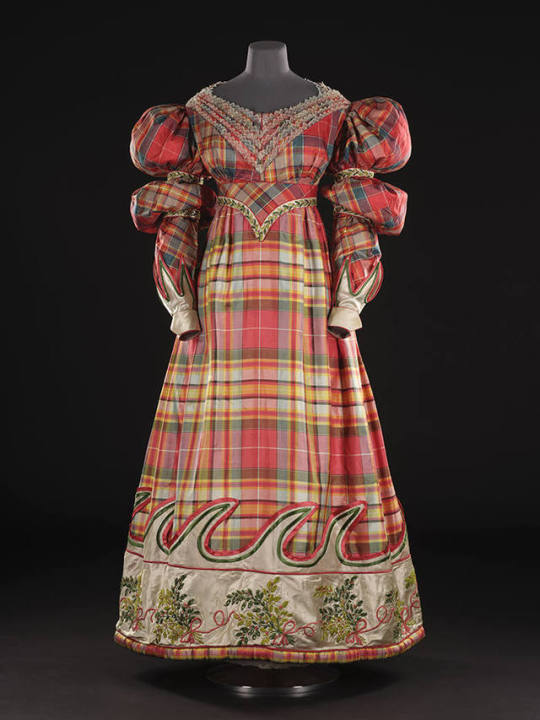
Dress
c.1832
National Museum of Scotland
#dress#fashion history#historical fashion#1830s#romantic era#romantic fashion#1832#19th century#red#tartan#plaid#scotland#national museum of scotland#popular
2K notes
·
View notes
Text
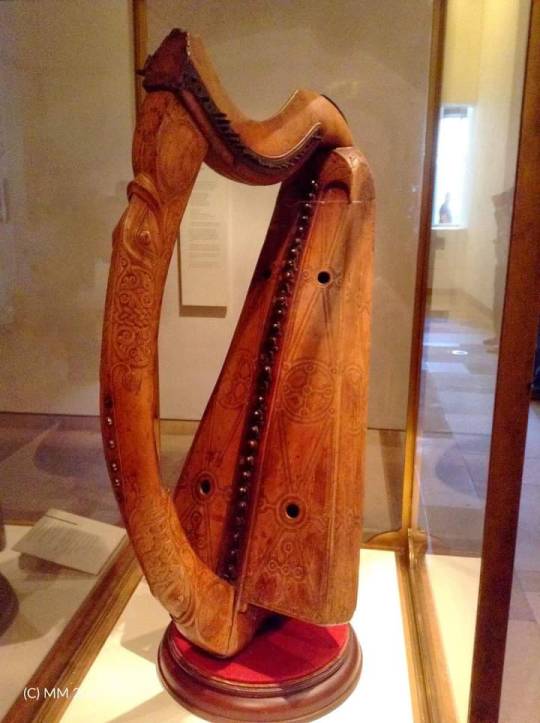
Queen Mary Harp - (National Museum, Edinburgh). The Queen Mary harp, (clarsach) dating from the 15th century or possibly before, is among the oldest surviving Celtic Harps in Scotland. The woodwork is richly decorated with scroll-work, geometric designs, and carvings of animals. According to a story associated with the harp, Mary Queen of Scots gave the instrument to a female ancestor (by marriage) of the Robertson family of Lude, in Perthshire. Another theory is that the harp previously belonged to an Ulster harp player who died in Scotland. The Celtic harp (clarsach), is believed to be the true and most ancient instrumental accompaniment of Gaelic song.
100 notes
·
View notes
Text
youtube
Welcome to the news wrap-up, where I cover a wide variety of current affairs in the history, archaeology, and museum-related realms.
In this video, I discuss the Pokémon x Van Gogh exhibition, some great repatriation news, Mischief at the Mütter Museum, and more!!
#history#museum#youtube#mütter museum#national museum of scotland#vincent van gogh#pokemon#archaeology#the sycamore gap#hadrians wall
45 notes
·
View notes
Text

Gold Finger Ring, nr. Selkirk, 9th Century CE, The National Museum of Scotland, Edinburgh
#ring#rings#ancient culture#ancient craft#ancient living#design#symbols#archaeology#jewellery#national museum of scotland#Scotland#relic#artefact#metalwork#metalworking
120 notes
·
View notes
Text
Explore the diversity of the natural world, world cultures, art and design, science and technology and Scottish history, all in one amazing building at the National Museum of Scotland, Edinburgh 🏴🎭
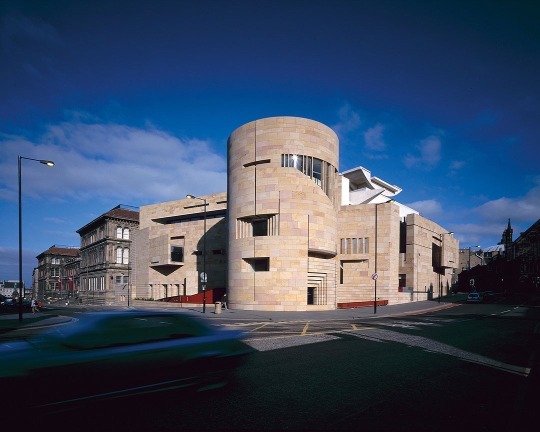


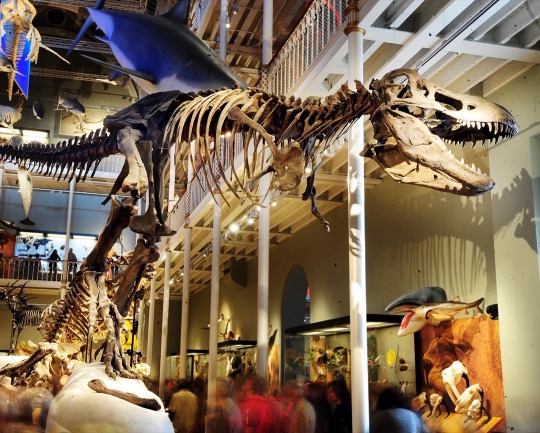






#scotland#scottish#travel#uk#travelinspiration#museum#national museum of scotland#Edinburgh#history#natural history
34 notes
·
View notes
Text
Today's Hidden Gem
Taking a wander through the National Museum today, I nearly walked past this cute lil' carving of an Ox!
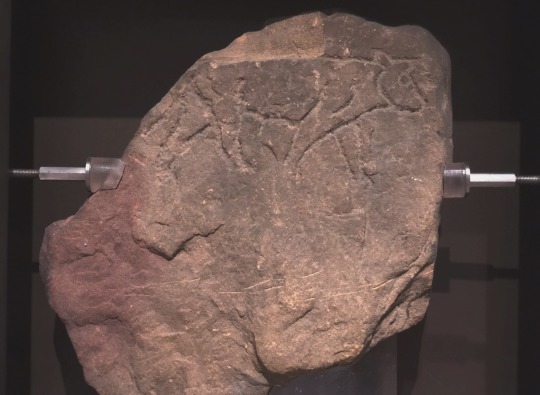
This wee beauty hails from East Lomond Hill, and dates to c.AD 500-800. Carved into (I believe) a rough block of sandstone is the ox, with clearly defined leg muscles, ears and tail!


Oxen were domesticated and utilised by farmers to move heavy loads and plough fields.
#national museum of scotland#national museums scotland#scottish youtuber#ancient history#archaeology#archaeogaming#youtube#chaotic academia#scottish archaeology#scottish history#archaeolorhi#ancient farming#oxen#animal carving#celtic art#roman art#roman britain#roman scotland#celtic britain#celtic scotland#celts#celtic#dark academia#celtic carving#scottish prehistory#scottish art#ox carving#ox painting
94 notes
·
View notes
Text
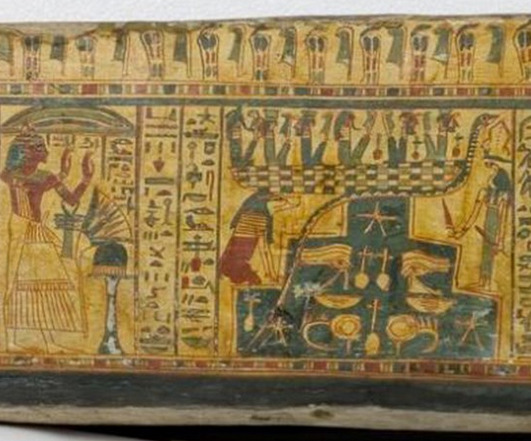
Hepet-Hor (far right) on the coffin of Iufenamun. She stands protectively before the double staircase which represents the primeval mount; Osiris sits atop it with a retinue of gods. Ammut sits on the left side of the staircase. At the National Museum of Scotland.
(I can't believe how many images of Hepet-Hor I've found. I've got a spreadsheet with over forty coffins and papyri. Some people just collect stamps...)
#Ancient Egypt#21st Dynasty#Third Intermediate Period#Hepet Hor#Ammut#coffin#yellow coffin#National Museum of Scotland#Iufenamun
15 notes
·
View notes
Text

my love in the national museum of scotland.
17 notes
·
View notes
Text

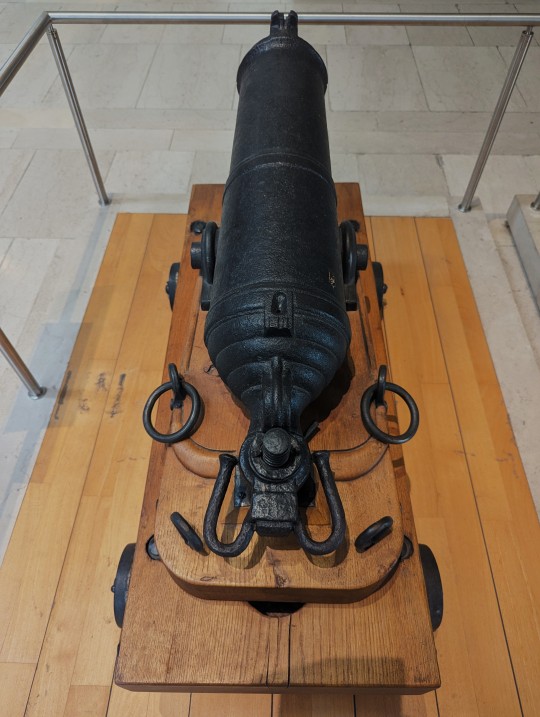
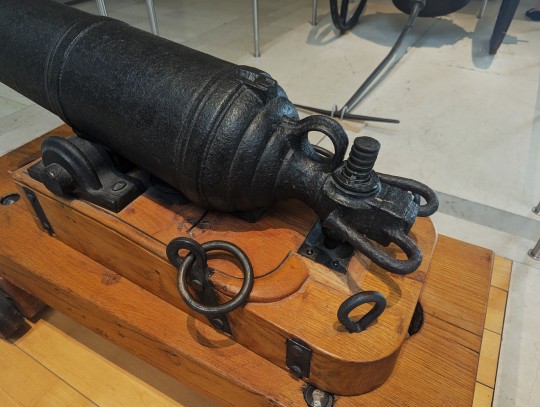
Carronade Six-Pounder Cannon from Falkirk, Scotland dated to 1781 on display at the National Museum of Scotland in Edinburgh, Scotland
This is one of the most famous products of Scotland's first large scale industrial company, the Carron Company. These powerful but light guns, named after the company, were first made in 1778 and soon became the favourite of Admiral Nelson's navy.
The Carron Company was established in 1759, near Falkirk in Strilingshire, by a group of entrepeneurs including the Englishmen Samuel Garbett, chemist John Roebuck and the Scot William Cadell. It was by far the largest enterprise of its kind in Scotland and used local ore, smelted by coke.
Photographs taken by myself 2023
#naval history#18th century#british empire#scotland#scottish#georgian#hanoverian#national museum of scotland#edinburgh#barbucomedie
129 notes
·
View notes
Text

Memorial Pole To Be Returned To The Nisga’a Nation After 93 years.
The pole "was acquired in 1929 by Canadian curator and ethnographer, Marius Barbeau, on behalf of the Royal Museum of Scotland, which later became the National Museum of Scotland (NMS), and went on display the following year.
"However, NMS said that while the museum acted in good faith in its acquisition of the pole, it now understands that the individual(s) who 'sold' it to Mr Barbeau did so without the cultural, spiritual, or political authority to do so on behalf of the Nisga’a Nation."
"Carved from red cedar in the 1860s, the pole [37 feet] includes family crests and animal and human figures. It commemorates the Nisga’a warrior Ts’aawit and stood outside his relatives’ home for 70 years before being removed while villagers were away for the annual hunting season."
"The museum agreed last year to return the pole, which has been on display since 1930."
[Source 1] [Source 2] [Source 3]
19 notes
·
View notes
Text

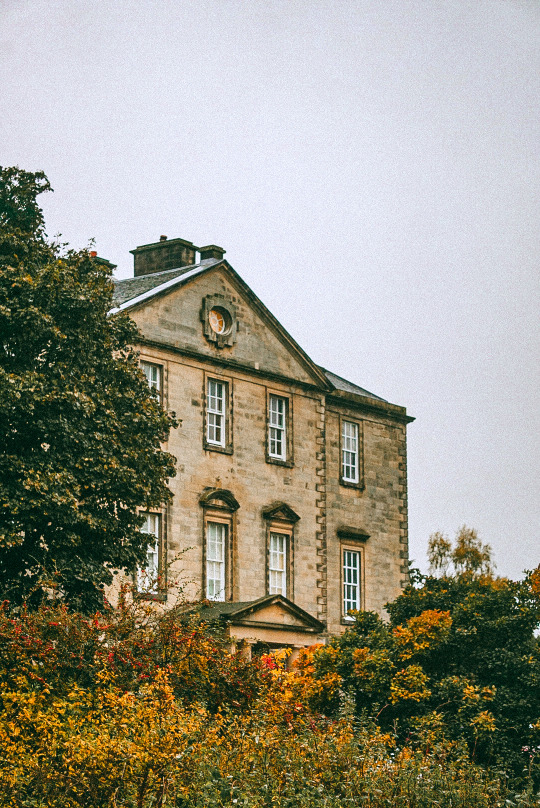

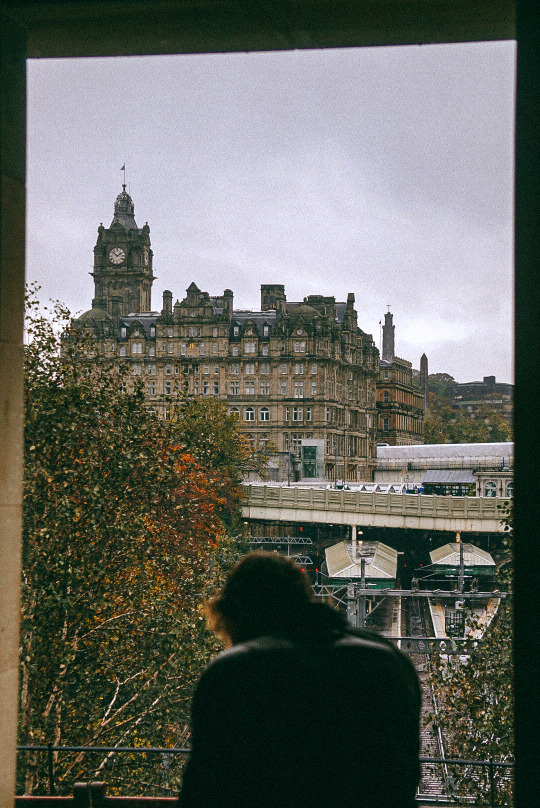
october 29, 2023 — following through arbitrary dreams🍂
#mine#photography#national museum of scotland#edinburgh#me#redhead#dark academia#studyblr#study abroad#scotland#autumn#halloween#lily potter
10 notes
·
View notes
Text


The Fettercairn Jewel
From my visit to The National Museum yesterday,, this fascinating wee pendant is shrouded in mystery, this is what the museum says about it.
The Fettercairn Jewel is an exceptionally rare Renaissance gold pendant locket. Set with a large almandine garnet, it features an elaborate scene in enamel on the back. The jewel is oval, with a fastening at the top to hold a gold ring, and, at the bottom, a smaller ring, that was originally a catch to hold the case shut. The case opens and would probably have contained a miniature portrait on vellum or ivory or some other personal memento. It would have been worn as a pendant on a chain or pinned to clothing, and it probably had a pearl or precious stone hanging beneath it.
The front of the Fettercairn Jewel, set with a large garnet, but I prefer the back, whichl is decorated with detailed enameled imagery.
The Fettercairn Jewel is one of a very small number of Renaissance jewels to have survived in the British Isles. Jewellery from such an early date has a very low survival rate, due to the historic recycling of precious stones and materials. This makes the survival of the Fettercairn Jewel remarkable.
Its Scottish provenance, and its potential relationship with other known jewels made for Scottish patrons, raise the possibility that the Fettercairn Jewel was made in Scotland or for a 16th-century Scottish patron. Our initial historical research is concentrating on these lines of enquiry.
The Fettercairn Jewel holds the potential to expand significantly our knowledge of the Scottish Renaissance, about the way in which a visually literate society communicated complex messages through objects, and to learn more about the quality and ambitions of 16th-century craftsmanship.
The garnet, on the front was reputed to have medicinal and healing properties.
On the reverse of the pendant the scene centres on a figure of Mercury, with his caduceus, or staff, resting on his outstretched right arm. He is wearing a winged helmet and classical armour, and holding something in his raised left hand.
To the right of Mercury sits a white dog looking upwards, possibly a symbol of fidelity. A vase of flowers stands to his left and more flowers appear elsewhere on the ground. The carefully delineated flowers, including cornflowers, wild roses, violets and marguerites, are all identifiable and many had specific symbolic meanings.
On the horizon are two groups of buildings and a large tree. On the buildings to the left sits a green bird resembling a parrot with its distinctive hooked beak, and on the right a smaller white bird. Above Mercury’s head flies another bird and two butterflies.
The dog, birds and flowers are not part of the usual iconography associated with Mercury, which suggests that the imagery has been designed with a particular meaning and patron in mind. Jewels of this sort often contained complex messages; could the animals and flowers have a heraldic association with the original owner of the Jewel? Is some more complex story hidden in its imagery? So far the Fettercairn Jewel retains its mystery.
Mercury was one of the most popular gods in Renaissance imagery. He was specifically associated at this time as the god of messengers and became closely associated with the officers of arms (the royal heralds) in 16th-century Scotland. An image from the Seton Armorial of c.1591 casts Lyon King of Arms, the king’s personal representative, as Mercury. This could suggest that the Fettercairn Jewel was crafted around the same time, and may indicate a connection to the Scottish court.
We are also trying to establish why the Fettercairn Jewel was made. One possibility links it to the extensive practice of royal court and noble household gift-giving: during the Scottish Renaissance, the royal family gave generous gifts of jewellery to courtiers and ambassadors, a practice common in other European courts of the period.
Alternatively, the Jewel may have been conceived as a token for a beloved family member or spouse. Jewels containing miniature portraits were often exchanged as keepsakes between loved ones, and would often be worn close to the heart.
The pendant came into the National Museums Scotland collection through an auction of over 400 works of art and artefacts from the private collection of the Forbes family, whose home was Fettercairn House in Aberdeenshire. The Forbes of Pitsligo descend from Sir William Forbes, brother of Alexander Forbes, first Lord Forbes. Both branches were prominent elite families in the sixteenth century. The first Lord Forbes married the granddaughter of King Robert II of Scotland and daughter of Douglas, Earl of Angus.
National Museums Scotland is investigating potential links between the Jewel and the Scottish royal court, and the possibility of its links to the Darnley Jewel, now in the Royal Collection. The Darnley Jewel was probably commissioned during the 1570s by Lady Margaret Douglas, Countess of Lennox, as a memorial for her husband Matthew Stewart, earl of Lennox and Regent of Scotland, and was later owned by both Horace Walpole and Queen Victoria. The Fettercairn Jewel shows similarities of design and technique with the Darnley Jewel, and their shared Scottish provenance merits further investigation.
The Fettercairn Jewel is currently on display in the Kingdom of the Scots gallery, near to the Penicuik Jewels, which are associated with Mary, Queen of Scots.
#scotland#scottish#jewellery#pendant#mystery#my pics#history#National Museum of Scotland#Chamber Street#edinburgh
55 notes
·
View notes
Text
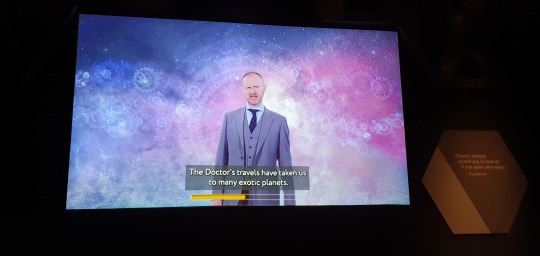
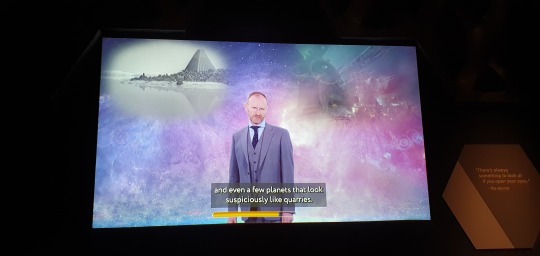
Went to the Doctor Who:Worlds of Wonder exhibition at the National Museum of Scotland in Edinburgh yesterday. Was delighted to find it was introduced and concluded by short videos from a familiar face who also featured in a group "recollections" video. I know several of my followers would like to see how smartly he was turned out (sorry for the people who crossed in front - not much I could do about that!)
27 notes
·
View notes